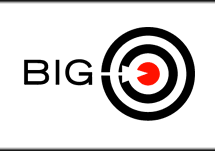Over the last several years in both articles and blogs outside the nonprofit fundraising space, the references to Clayton Christensen are becoming more and more common. Yet virtually none of the 30 or so nonprofit fundraisers I have talked to recently have heard the name . . . hence the Two Part subject for this and the next blog.
Clayton Christensen, or, more correctly, Professor Clayton Christensen wrote a book that was first published in 1996 called The Innovator’s Dilemma.
The major theme of the book is that, from time to time, innovations (technological or otherwise) will arise. These innovations may have the possibility of displacing the existing product or business model of a company or even an industry.
When this happens, leaders face a dilemma because the new innovation never comes fully birthed and ready to displace the existing way of doing business. Therefore, adopting or incorporating the innovation into the business brings with it significant risk of disrupting current operations. However, it is also equally risky to the leader who sees the inherent value of the innovation to lose much long-term by not pursuing the innovation.
The leader thus faces a dilemma based upon this new innovation. The key decision then is how to incorporate the new innovation into the organization to minimize the disruption of current operations, yet allow the new innovation to find its feet so it can grow and achieve its potential.
Examples of both successful adoption and failed adoption are illustrated in the stories of Dayton Hudson Corporation and Eastman Kodak.
Dayton Hudson Corp., based in Minneapolis, was a major regional department store chain. In the late 1950s and early 1960s, a new retail innovation called “discount retailing” had come on the scene and had the potential to significantly impact department stores who were, at the time, the dominant form of retail with names like JC Penney and Sears being at the forefront.
The department store’s business model was to turn inventory twice a year with an average 40% margin. Discount retailing’s innovation was to turn their inventory eight times a year with an average 20% margin.
Dayton Hudson’s management decided that discount retailing was such a threat that if they did not react, their ability to grow as a company could be significantly affected. Rather than disrupt their existing department store business model, they chose to set up a separate operation with its own management team and business plan, and even created a separate name for this new division. Today we know that company as Target. Target has been so successful as the dominant profit generator for Dayton Hudson that the corporation officially changed its name to Target Corporation in 2000.
Eastman Kodak was the story of corporate success from its founding through the end of the 20th century. Kodak was arguably one of the most successful corporations in American history, and through the end of the 20th century dominated photography, owning 89% of the market for film in the United States alone.
In 1975, however, Kodak’s own engineers developed the breakthrough technology innovation for digital photography. Kodak’s CEO at the time, George Fisher, understood the implications of this innovation and the impact it would have on their traditional film business. He set a decade-long plan in place to shift the entire company to digital, even reaching out to young technology companies Microsoft and Apple in distribution partnerships. Yet Mr. Fisher and his successor could not overcome internal resistance to the plan since the film business was still such a dominant product and produced massive profits. Below the level of the CEO, resistance to shifting stifled digital product development. Digital photography product innovation was left to outside companies, and with the shift from analogue to digital post-2000, Kodak’s film business collapsed and are today in bankruptcy proceedings.
-Mike
Welcome to BIG's Blog! Please feel free to forward this post to your friends and coworkers...and email me a comment at: mike@big-db.com

